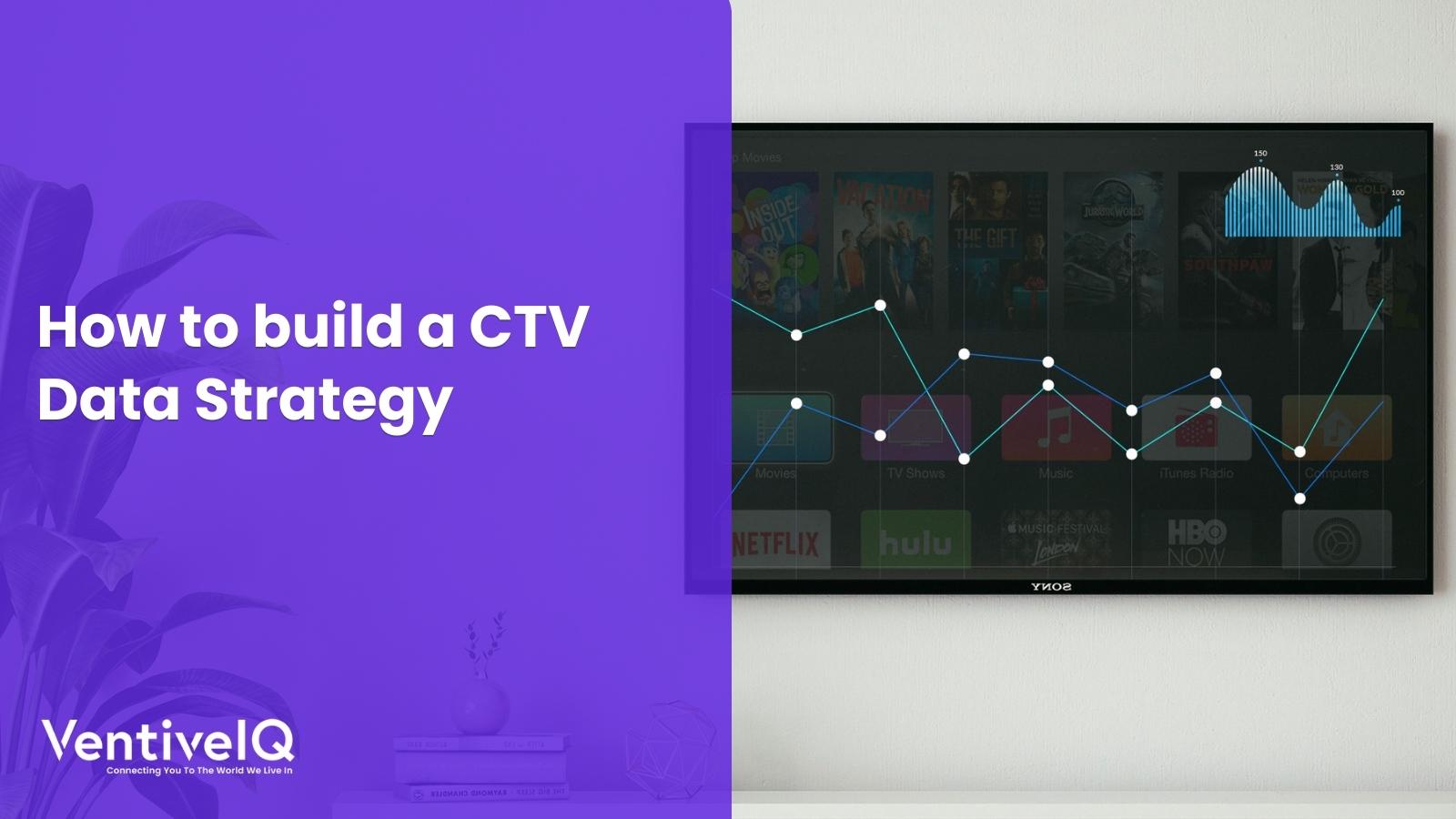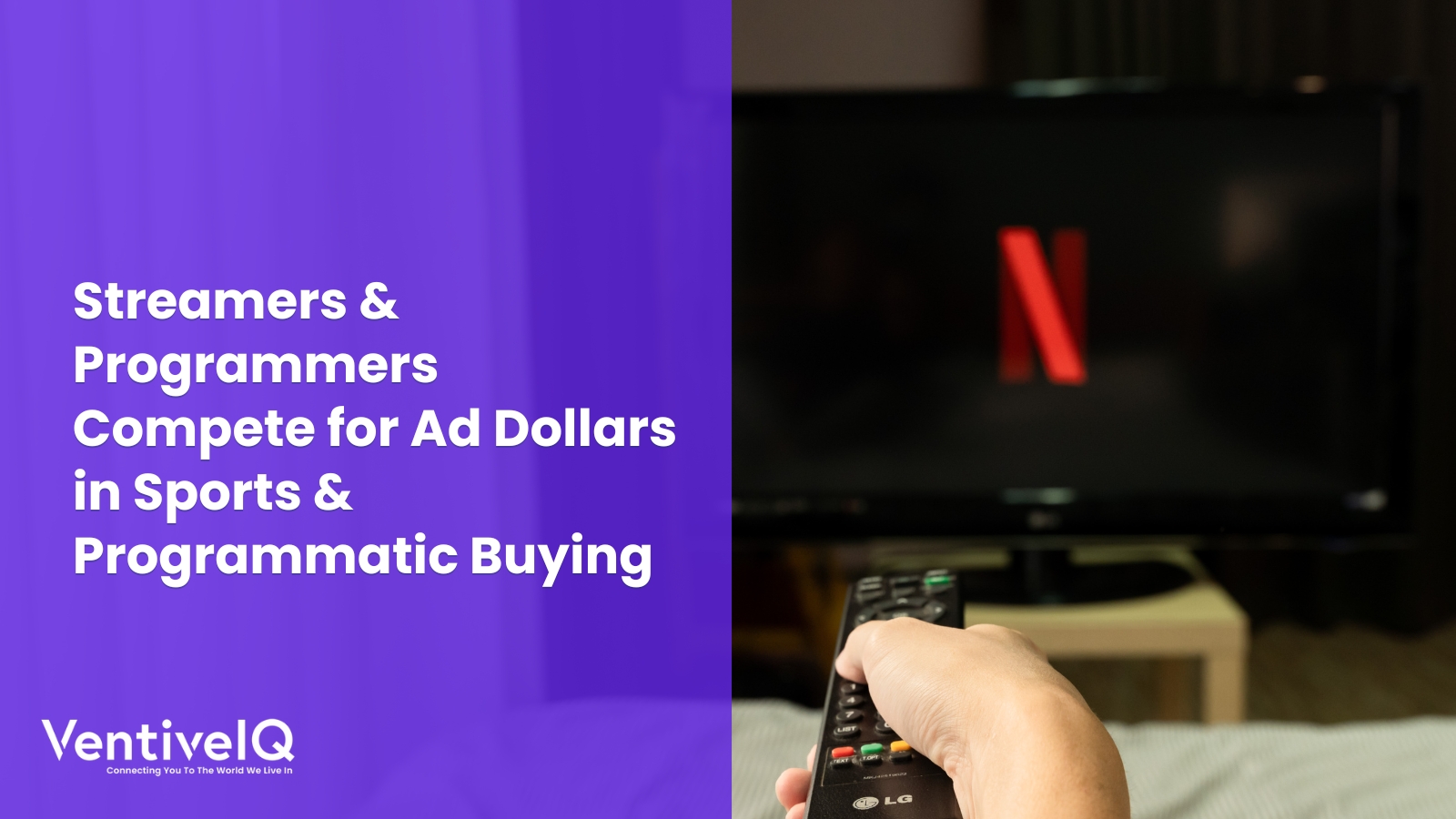Craft a powerful CTV data strategy for success. Drive brand awareness, conversions, and customer retention with precise targeting and data-driven optimization.
Overview
Connected TV (CTV) has emerged as a powerful platform for advertisers to engage with their target audience. It is quickly becoming one of the most important advertising channels, with spending expected to reach $19.4 billion in the US by 2024. As a result, brands are increasingly looking for ways to leverage CTV data to reach their target audiences more effectively.
In this blog post, we’ll outline the key steps involved in building a CTV data strategy, offering insights and perspectives from VentiveIQ, a leading technology provider in the CTV advertising space.
Step 1: Understand your audience
The first step in building a CTV data strategy is to understand your audience. Who are you trying to reach? What are their interests? What are their viewing habits?
Once you have a good understanding of your audience, you can start to collect data about them. There are several ways to perform this:
- First-party data: This data refers to the information collected directly from customers, including email addresses, purchase history, and website activity.
- Second-party data: This is data that you purchase from other companies. This data can be very valuable, as it can help you to reach new audiences and target your ads more effectively.
- Third-party data: This is data that is collected by third-party companies and sold to advertisers. This data can be less accurate than first-party or second-party data, but it can be a valuable resource if you’re looking to reach a large audience.
Step 2: Collect data from CTV devices
Once you have collected data about your audience, you need to collect data from CTV devices. This data can help you to understand how your audience is interacting with CTV content, and it can also help you to measure the effectiveness of your CTV advertising campaigns.
There are several ways to collect data from CTV devices, including:
- SDKs: SDKs (software development kits) are small pieces of code that you can add to your CTV apps and websites. SDKs can collect data about how users interact with your content, such as what they watch, how long they watch it for, and what devices they’re using.
- DMPs: DMPs (data management platforms) are platforms that collect and store data from a variety of sources, including CTV devices. DMPs can help you to aggregate and analyze your data, and they can also help you to target your ads more effectively.
- DSPs: DSPs (demand-side platforms) are platforms that help you to buy and manage CTV advertising. DSPs can use your data to help you to find the right inventory and to target your ads to the right audiences.
Step 3: Select your targeting options
Once you have segmented your audience, you need to select your targeting options. There are a variety of targeting options available for CTV advertising, including:
- Demographic targeting: This allows you to target your ads to people based on their age, gender, income, or other demographic factors.
- Interest targeting: This allows you to target your ads to people based on their interests, such as their favorite hobbies, TV shows, or websites.
- Behavioral targeting: This allows you to target your ads to people based on their past behavior, such as their website visits, app usage, or social media activity.
Step 4: Integrate your data
Once you have collected data from a variety of sources, you need to integrate it so that you can view it all in one place. This will make it easier for you to analyze your data and make informed decisions about your CTV advertising campaigns.
There are several ways to integrate your data, including:
- Using a data warehouse: A data warehouse is a centralized repository for data from different sources. Data warehouses can help you to integrate your data and to make it easier to analyze.
- Using a data lake: A data lake is a repository for raw data. Data lakes can help you to store your data in its original format, which can make it easier to analyze in the future.
- Using a data integration platform: A data integration platform can help you to integrate data from different sources and to load it into a data warehouse or data lake.
Step 5: Analyze your data
Once you have integrated your data, you can start to analyze it. This will help you to understand your audience, to measure the effectiveness of your CTV advertising campaigns, and to make informed decisions about your future campaigns.
There are several ways to analyze your data, including:
- Using data visualization tools: Data visualization tools can help you to create charts and graphs that can help you to understand your data.
- Using statistical analysis tools: Statistical analysis tools can help you to test hypotheses and to make predictions about your data.
- Using machine learning algorithms: Machine learning algorithms can help you to automate the analysis of your data and to identify patterns that you might not be able to see on your own.
Step 6: Measure your results
The final step in building a successful CTV data strategy is to measure your results. This means tracking the performance of your campaigns and adjusting as needed. There are a variety of tools available for measuring the results of CTV advertising, such as:
- Ad serving platforms: These platforms provide detailed reports on the performance of your ads, including impressions, clicks, and conversions.
- Attribution models: These models help you to determine which marketing channels are responsible for driving conversions.
VentiveIQ Perspective
VentiveIQ is a leading data and analytics company that helps brands build successful CTV advertising campaigns. We offer a comprehensive suite of data solutions that can help you to collect, clean, unify, segment, target, and measure your CTV advertising data. We also have a team of experts who can help you to develop and implement a CTV data strategy that is right for your business.
If you are interested in learning more about how VentiveIQ can help you with your CTV advertising data, please contact us today.
Conclusion
Building a successful CTV data strategy in the USA requires a comprehensive approach that leverages both first-party and third-party data sources. By understanding the CTV landscape, defining advertising goals, and implementing data privacy practices, marketers can develop a data strategy that drives better targeting, engagement, and ROI. VentiveIQ’s expertise in the CTV advertising space empowers advertisers to unlock the full potential of CTV data. Embrace the power of data-driven decision-making and create impactful CTV campaigns that resonate with your target audience in the dynamic digital landscape.



